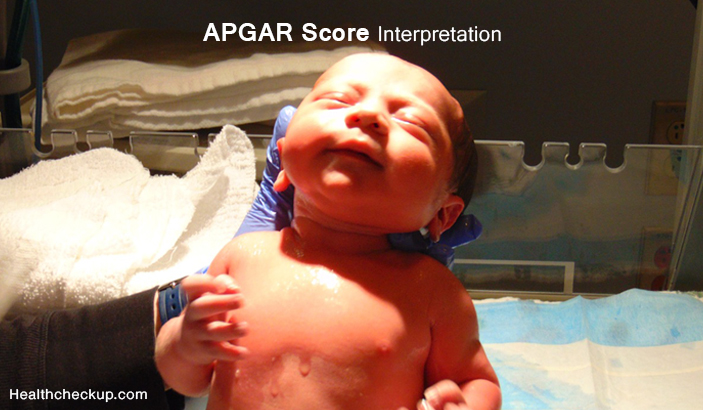Within one to five minutes after your baby is born, doctors and nurses will assess your baby’s health and vital signs using the APGAR score. This is named after the creator of the said test Dr. Virginia APGAR in 1952, but it also stands for Appearance, Pulse, Grimace, Activity, and Respiration.
What Is The APGAR Score And Its Full Form?
APGAR score is a technique to assess the general well-being of your newborn. It uses five criteria, including Appearance, Pulse, Grimace, Activity, and Respiration.
This Is How Each Criterion Is Determined
- Appearance– By evaluating your baby’s skin color;
- Pulse– By evaluating your baby’s heart rate;
- Grimace– By evaluating your baby’s response or reflex irritability;
- Activity– By evaluating your baby’s muscle tone; and
- Respiration– By evaluating your baby’s breathing ability.
When Is APGAR Score Assessed?
APGAR score is assessed one within a minute and five minutes after your baby is born. There are rare instances when this test can be done within 10 minutes after birth. The first-minute score is used to ascertain how your baby tolerated the birthing process. On the other hand, the 5-minute score can show the condition of the baby outside your womb.
APGAR Score Chart
The following table describes the APGAR score chart;
| Appearance | 0 Blue; Bluish-gray; or Pale all over |
1 Pink body, blue extremities |
2 Pink all over |
|---|---|---|---|
| Pulse | Absent | < 100 beats/minute | > 100 beats/minute |
| Grimace Absent |
Absent | Grimace with stimulation/ facial movement | Cry, sneeze or cough, and withdrawal of food with stimulation |
| Activity | Floppy or limp | Flexed limbs | Actively moving |
| Respiration | Absent | Irregular | Good |
APGAR Score Interpretation
There are five criteria in APGAR scoring. Each criterion is given points from 0 to 2. As you can see from the chart, each point means something. Your baby can receive at the most score of 10. But take note that it is rare for your baby to get a score of 10, this is because the test is conducted during the first few minutes after his birth.
What Does APGAR Score Of 3 or less Indicate?
In the first minute score, the APGAR score of 3 or less is an indication that your baby needs to be conducted with lifesaving measures. This range is “concerning.” But some babies, such as premature babies, babies who had complicated deliveries, and those born via cesarean, are expected to have lower APGAR scores.
What Does An APGAR Score Of 4 to 6 Indicate?
Scores ranging from 4 to 6 may indicate that your baby needs some assistance. For instance, your baby has an APGAR score of 5, and this means that he is “moderately abnormal.” But in this situation, your baby may require some breathing device. Using the 5-minute score, scores below seven does not really mean that your baby suffers from permanent health issues. Your healthcare provider might need to monitor your baby every 5 minutes until 20 minutes after birth.
What Does High APGAR Score Of 7 To 10 Indicate?
The higher the APGAR score, the healthier is your baby. So if your baby’s score is within this range, then he is considered healthy. For instance, having an APGAR score of 9 means “reassuring.”
What Can Cause Low APGAR Scores?
Sometimes, low APGAR scores are just normal, especially for newborn babies. It doesn’t really mean that your baby is not entirely healthy. He might need some time to adjust outside your womb. That is why low APGAR scores and development are often linked together. But there are cases when this indicated that your baby is suffering from birth-related complications such as infections, preterm birth, uterine hyperstimulation, uterine rupture, placental abruption, umbilical cord problems, and many more.
[Also Read: How To Prevent Birth Defects During Pregnancy]
What Happens When My Baby Has A Low APGAR Score?
The APGAR score shows your baby’s condition within minutes after birth. It does not indicate adverse neurological outcomes or predicts mortality. According to studies, newborns that have low APGAR scores are most likely to be at risk of abnormality and cerebral palsy. But, the probability of having cerebral palsy is low and rare. Remember that your baby’s score is affected by various factors such as maternal medications, gestational age, neurological and cardiorespiratory conditions, and resuscitation.
Conclusion
A minute after your baby is born, your healthcare provider will undertake a test for your baby. The APGAR score chart is used to assess your baby’s entire health status, APGAR score of 10 being the highest score your baby can obtain. If your baby gets lower than 7, it doesn’t really mean that he is unhealthy. Sometimes, it’s normal to have a lower APGAR score of 3 or less, especially to those babies who are premature, have complications, or born via cesarean.
Doctor, author and fitness enthusiast, Ahmed Zayed, MD, is a surgery resident with a passion for helping people live a happy healthy life. He is the author of numerous health-related books and contributor to several medicine, health and wellbeing websites.









